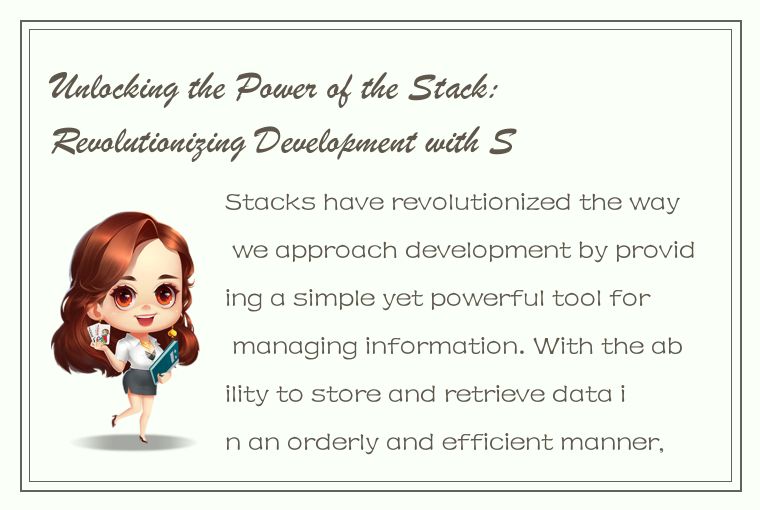Stacks have revolutionized the way we approach development by providing a simple yet powerful tool for managing information. With the ability to store and retrieve data in an orderly and efficient manner, stacks have become a key component in many programming languages and applications. In this article, we will explore the concept of stacks and examine how they have unlocked the power of development.

What is a Stack?
A stack is a collection of elements that can be accessed in a particular order. Unlike arrays or lists, stacks are built on the Last-In-First-Out (LIFO) principle, which means that the last element added to the stack is the first one to be removed. In other words, a stack can be thought of as a pile of objects, with the most recently added object sitting on top.
One of the key advantages of stacks is their simplicity. They can be implemented in a variety of programming languages using a small set of operations, including push (adding an element to the top of the stack) and pop (removing an element from the top of the stack). These operations can be used to quickly and easily manipulate the data stored in a stack.
Another advantage of stacks is their efficiency. Because they are built on the LIFO principle, stacks require minimal memory and processing power to manage. This makes them ideal for use in situations where resources are limited, such as in embedded systems or mobile devices.
How are Stacks Used in Development?
Stacks have a wide range of applications in development, from managing data structures to implementing algorithms. Some of the most common uses of stacks include:
- Parsing and evaluating expressions: Stacks can be used to evaluate mathematical expressions in a way that takes into account the order of operations. By using a stack to keep track of operators and operands, developers can easily calculate the results of complex expressions.
- Undo and redo operations: Stacks can be used to implement undo and redo operations in applications such as text editors or graphic design software. By keeping track of changes to a document or design in a stack, developers can easily undo and redo changes as needed.
- Program execution: Stacks can be used to manage the execution of programs by keeping track of the call stack. This is particularly useful in recursive algorithms or functions, where multiple calls to a function need to be tracked and managed.
- Memory management: Stacks can be used to manage memory allocation and deallocation in programs. By keeping track of allocated memory in a stack, developers can easily free up memory when it is no longer needed.
The Power of Stacks
Stacks have unlocked a tremendous amount of power in development by providing a simple yet effective tool for managing data. By using stacks, developers can quickly and easily manipulate data structures and implement complex algorithms. Stacks also provide a level of efficiency that is hard to match with other data structures, making them ideal for use in resource-constrained environments.
Perhaps the biggest advantage of stacks, however, is their versatility. Stacks can be used in a wide range of applications, from text editors to compilers to image editing software. In fact, it is hard to imagine modern software development without stacks.
Conclusion
In conclusion, stacks have revolutionized the way we think about development by providing a simple and powerful tool for managing information. With applications ranging from parsing expressions to implementing undo and redo operations, stacks are a critical component of modern development. As we look to the future, it is clear that the power of stacks will only continue to grow, unlocking new possibilities for developers and improving the efficiency of software development.




 QQ客服专员
QQ客服专员 电话客服专员
电话客服专员